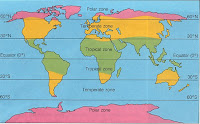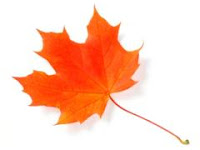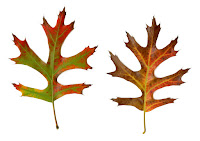One of the twins asked me how leaves change in autumn. Instead of saying, “I don’t know,” which I didn’t. I said, “Let’s find out together.” True, my kids groan when I say this. But I think it’s part of a parent’s job. I truly believe that parents are their children’s first teachers—in many ways.
So back to how leaves change color in autumn. Please understand that I am not a science major. I started as I usually do when asked a nature science question by my children. I turn to the United States National Parks Service. We learn so much from the park rangers when we camp with five kids at national parks.
This time I used the Department of Agriculture Forest Service site. So this post is a summary of what we learned from national and state forest services and my tree books:
Fruit Key & Twig Key to Trees and Shrubs by William M. Harlow, Ph.D.
A Field Guide to the Pine Barrens of New Jersey by Howard P. Boyd.
You may know that the deciduous trees—the trees with leaves—are the trees that change color in autumn, and only those leaf-bearing trees in the temperate zones change. The temperate zones are found about 30 degrees above Tropic of Cancer in the northern hemisphere to about 60 degrees near the top of Canada, and the same degrees in the southern hemisphere, south of the Tropic of Capricorn to about 60 degrees near the edge of Antarctica.
The key to leaves changing is the growing length of night in autumn.
Here’s a little chemistry:
Chlorophyll gives leaves their basic green color and is necessary for photosynthesis, the chemical reaction that enables plants to use sunlight to manufacture sugars for their food. What we learned was that there is a second chemical present in the leaves throughout their growing season [spring and summer]: Carotenoids. Carotenoids produce the yellow, orange, and brown colors in plants.
A third chemical appears in the leaves during autumn. Anthocyanins offer the red and purple colors to leaves and plants.
Now, during the growing season, chlorophyll is continually being produced and broken down and leaves appear green. As the night lengthens in autumn, the chlorophyll production slows down and then stops and eventually all the chlorophyll is destroyed.
The carotenoids [the yellow and orange] and anthocyanins [the red and purple] that are present in the leaf are then unmasked and show their colors.
“Ta-da!” I told the kids. I thought it was fascinating. I thought it answered all their questions.
Nope!
“But Mom,” our son asked, “what makes the leaf fall off?”
Back to the books and websites. I found more science.
Since the daylight fades faster in autumn and the night lengthens, the veins that carry fluids into and out of the leaf gradually close off. A layer of cells forms at the base of each leaf. The clogged veins trap sugars in the leaf and promote production of the anthocyanins, the red and purple colors. When most of the green is gone from leaves, the leaf is ready to fall.
I thought this would be enough. Not for my kids.
“It’s cold in the winter,” the other twin said. She’s my fellow tree-hugger. “Wouldn’t the tree be warmer with its leaves on?
More reading steered us to this:
Leaves are too tender to withstand a freezing winter. The trees have protection for the thicker stems, twigs, and buds to survive extreme cold. Therefore, the trees must release their leaves so we can crunch through them, I told the kids.
Done!
Nope.
“But what about the pine trees,” our oldest asked. “Do they lose their needles in autumn?”
*Who taught these kids to ask so many questions?*
The evergreens or conifers keep their needle-leaves. The pine needles are covered with a heavy wax coating and the fluid inside their cells contains substances that resist freezing.
“But why do we find brown needles on the ground around pine trees in the forest,” our brainiac wanted to know.
I should have studied science instead of English. But I was curious, too.
We discovered that evergreen needles survive for some years but eventually fall off because of old age—not seasonally for autumn. That’s why you can find brown pine needles on the ground or a few on the tree. It’s not seasonal, it’s old age.
The leaves of broad-leafed plants are thin and vulnerable to damage. These leaves are not protected by any thick coverings. The fluid in the cells of these leaves is usually a thin, watery sap that freezes easily.
After our science lesson—which took over a week to learn everything—the five kids grabbed some bags and we took a walk in the woods near our home to gather leaves and talk about trees.
Maybe I’ll share what we’ve learned about tree species next time. This is just a summary of what we’ve learned about how and why tree leaves change color and fall off in autumn. I hope you’ve learned something new. Please feel free to share any knowledge you may have about nature, autumn, or trees here at Camping with Five Kids. It would truly be appreciated. Enjoy your seasons!




Hi Victoria Marie – it is certainly not easy to explain … we know they change … but the science is always mind boggling – well done for explaining it so clearly for us … and each tree species is of course so different … well done and congratulations … cheers Hilary
Yours is authoritative … mind you having 5 kids ask questions perhaps no wonder at that … I, however, with no kids did write a simpler note on autumnal colour changes!! … here:
https://positiveletters.blogspot.com/2012/10/leaf-change-autumnal-colours-goodbye.html
It is always such a pleasure, Hilary, to find your comment here at Camping with Five Kids. Children never cease asking questions. And this is a good thing. We adults can learn from this. I will hop over to your blog post on autumnal colour changes. Thanks again for your note on Camping with Five Kids. All best to you!
This is very interesting. I didn't know about the pine needles. Thanks for the great information!
Thanks for going over and commenting – lovely one too … enjoy the rest of Autumn or Fall – gloriously sunny here … cheers Hilary
Lucky you, Hilary. New Jersey is still getting lots of rain. I don't think my bones will ever dry out. The rain makes crunching through the autumn leaves on the ground next to impossible. Still, whenever there's a minute of sunshine, you'll find me and the kids outside picking up beautiful leaves to decorate the house.
Thanks for your note on Camping with Five Kids. Have a great week!
My pleasure, Michelle. I'm all about sharing what I learn with other people.
It is always such a pleasure to find your comment here at Camping with Five Kids, Michelle. Enjoy your fall!
What a brilliant explanation. Your kids are so lucky to have parents like you and your husband. Most parents think education is just the province of the kids teachers.
I firmly believe that parents are the first teachers of their children, Bill. Thank you so much for your kind words here at Camping with Five Kids. I certainly appreciate them. Enjoy your fall!